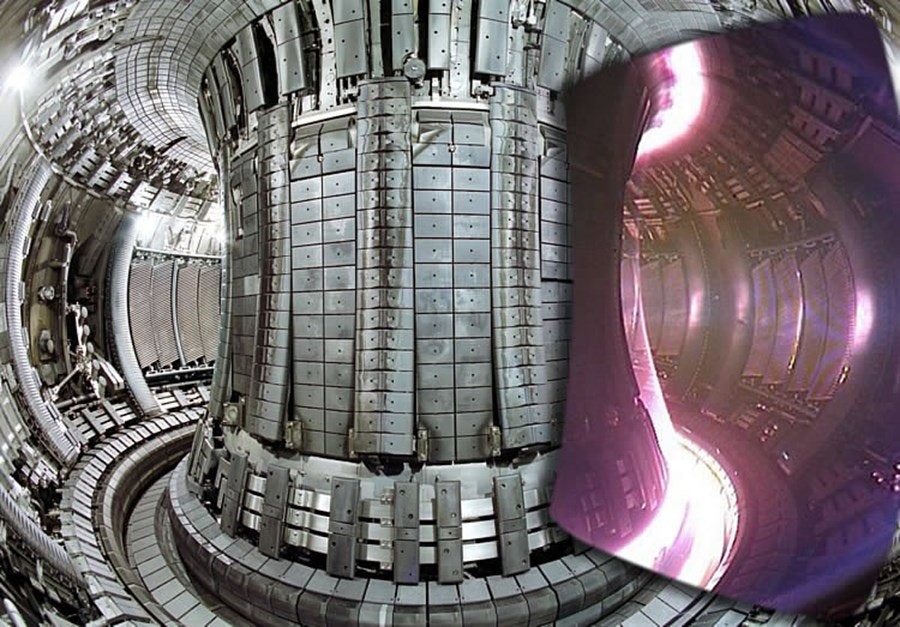More than $3bn was invested in nuclear fusion startups last year — just one of the growing signs that this clean nuclear energy source, previously seen as the realm of science fiction, may be becoming a reality.
In the nuclear energy available today, atoms are split to extract large quantities of energy — nuclear fission. But imagine if instead of splitting atoms one could merge them — fusion — and get the same amount of energy while creating vastly less radioactive waste.
This is what powers the sun, and scientists have for decades tried to do the same here on Earth — but it’s not an easy task. Things are now, at last, looking up, according to Staffan Qvist, a nuclear energy engineer and consultant.
Technological progress is making fusion possible in both of the two main approaches — the magnetic-confinement approach, which uses powerful superconducting magnets in a tokamak chamber to get plasma to intense heat levels needed for the reaction; and the inertial confinement approach, which involves shooting lasers at thermonuclear fuel to trigger a reaction.
“It's a standing joke that fusion will always be 30 years away. But, that time-dependent is very capital-dependent as well,” Qvist says. “Lately, more money than ever before has been invested in fusion startups, so now things are about to happen."
With one gram of this fuel you can extract as much energy as from 12 tonnes of coal
Only a small proportion of the billions invested in fusion are going to European startups.
One of the companies getting some attention is German startup Marvel Fusion, which earlier this month raised a €35m Series A round. According to the CEO and cofounder Moritz von der Linden, this will help the startup demonstrate that its approach using laser technology is working.
“What we require for that is laser facilities that have the right performance. While it is a key advantage that we don't need a billion upfront to build a tokamak, but can utilise existing laser facilities — it is also a disadvantage because we don't have proprietary access so we have to queue up to be able to access those facilities,” says von der Linden.
“We endeavour to raise €500m for our next step, building our own demonstration facility.”
How do the fusion companies differ?
One of the most well-financed startups in this space is the US-based startup Helion, which uses helium-3 as fuel in its magnetic-confinement approach. Helium-3 is an extremely rare compound on Earth and therefore very expensive; however, it is readily available on the moon. Helion is one of the startups keen to get a moon base up and running to be able to tap into its reserves.
The UK-based startup First Light Fusion is pursuing inertial confinement fusion, like Marvel Fusion, but uses a fast-moving projectile (an electromagnetic gun) to accelerate a bullet that hits a fuel target of deuterium-tritium to achieve the extreme temperatures and pressures required.
For magnetic confinement, gases need to be heated to extreme levels of 150m Celsius, 10 times hotter than the centre of the sun, for the atoms to merge. The hotter temperatures are to compensate for the weaker gravity on Earth than the sun.
There is a trend to look for residual chemicals that could be left after the fusion reaction
For Marvel Fusion, those extreme temperatures will not be necessary, according to von der Linden. The startup is using the latest generation of ultrashort pulse lasers that amplifies the laser beam, and using boron for fuel to create a Coloumb explosion to reach fusion conditions. Boron is, in comparison to helium, easy to find on Earth, with major borax (a naturally occurring compound) mines in California and Turkey.
“I think what's interesting is that you know, with one gram of this fuel you can extract as much energy as from 12 tonnes of coal. It’s high-density energy and yes, it's absolutely fascinating how dense it is,” von der Linden says.
On the magnetic confinement side, there was a recent breakthrough at the Joint European Torus (JET) facility, a giant physics lab located in Oxfordshire in the UK, with a test generating 59 megajoules of heat during a five-second burst of fusion inside a tokamak reactor. That it managed to keep going for “so long” give scientists hope that it could continue in a stable manner for much longer.

The breakthrough was met by cheering at the vast $20bn fusion reactor ITER in France, which is hoping to start burning deuterium-tritium fuel in 2035, using the same technology as at the JET.
The famous Q value
A major hurdle that these startups need to clear is producing as much energy through their fusion machines as they put in. This is called the “Q” value. To get it closer to one, meaning as much energy is coming out as has gone, would be a major win.
So far most fusion experiments are using massive amounts of energy. At JET “only” about three times as much energy was put into the tokamak in comparison to what the reaction produced.
It will likely take another five years before any of the startups in this field get even close to a Q value of one.
One thing I’ve learned over the years is that you cannot win against the regulator
“When we talk about this famous Q, everyone looks at what's coming out. It's equally important to look at what's going in and the more efficient you are in that pot, the easier it is to reach commercially viable Q levels,” says von der Linden.
Getting fusion to a positive Q value is the “holy grail” of energy, creating a model that's sustainable and with massive output. But will it ever be cheap?
“If it becomes cheap or not, that is a bit of an open question and will depend on regulation in this space. If fusion is regulated in the same way that fission has been, then it will be a huge obstacle,” says Qvist.
What about radioactive residue?
Nuclear energy has always been dogged by concerns about nuclear waste. According to Qvist, fission has been more heavily regulated than other energy sources with a similar risk profile. And whilst the next generation of nuclear energy startups have limited nuclear waste, they are, perhaps understandably, still heavily regulated.
Nuclear fusion, sadly, won’t completely solve the nuclear waste problem.
“If you're only using deuterium, tritium, helium-2 and helium-3, you create your energy in neutrons and that essentially activates your material. Then you are left with nuclear waste,” von der Linden says.
However, there is less of it created, it won't be as long-lived as in fission and the nuclear waste will be able to be recycled or reused after 100 years.
Fusion startups are carefully watching the Nuclear Regulatory Commission in the US to see whether fusion will get a lighter regulatory framework than fission, and in particular what it says about nuclear residue. Von der Linden says he is cautiously optimistic.
“I think I can see a trend to treat fusion differently than fission, but there is certainly also a trend to look for residual chemicals that could be left after the fusion reaction or in surrounding materials."
“One thing I’ve learned over the years is that one; regulation knows only one direction and it only increases; and two, you cannot win against the regulator."
European fusion startups that investors have put their faith in
Tokamak Energy
Founded in 2009, Tokamak Energy is a spin-off from the Culham Centre for Fusion Energy, the UK’s national fusion research laboratory, and it is often referred to as one of the key players in this field. The company develops small, compact fusion power plants driven by technological breakthroughs. It's pursuing fusion through the combined development of spherical tokamaks along with high temperature superconducting (HTS) magnets.
The company has so far raised over £120m from a range of investors, such as the Capri Sun heir Hans-Peter Wild, and employs about 160 people in the UK.
First Light Fusion
Founded in 2011, this Oxford spinoff’s tech is based on inertial confinement, creating extreme temperatures and pressure by compressing a target using a projectile travelling at massive speed. First Light Fusion installed a 25-tonne, 22-metre long “Big Gun” fusion device in May 2021, with a successful testing and commissioning phase.
It expects to demonstrate a first-of-a-kind plant in the 2030s. So far, the startup has raised $57m from IP Group and Parkwalk Advisors.
Marvel Fusion
This Munich-based startup, founded in 2019, is developing a laser-based nuclear fusion reactor designed to offer environment-friendly and safe energy. It has raised an undisclosed seed round from Blueyard VC and €35m from Early Bird Ventures, Taavet Hinrikus and others for its Series A.
Focused Energy
German startup founded in 2021, with founders previously at Marvel Fusion, is similarly to Marvel Fusion developing a fusion power plant based on recent breakthroughs in laser and target technology. The startup has raised $15m in seed funding led by Prime Movers Lab.
Renaissance Fusion
This French nuclear fusion startup, founded in 2019, is also working on the magnetic confinement of fusion plasma, but instead of using a tokamak, it is designing a different kind of technology, called a stellarator. It will be simpler to operate than a tokamak, the company says, but it is more complicated to build. Renaissance is hoping to be producing energy from fusion by 2035.


